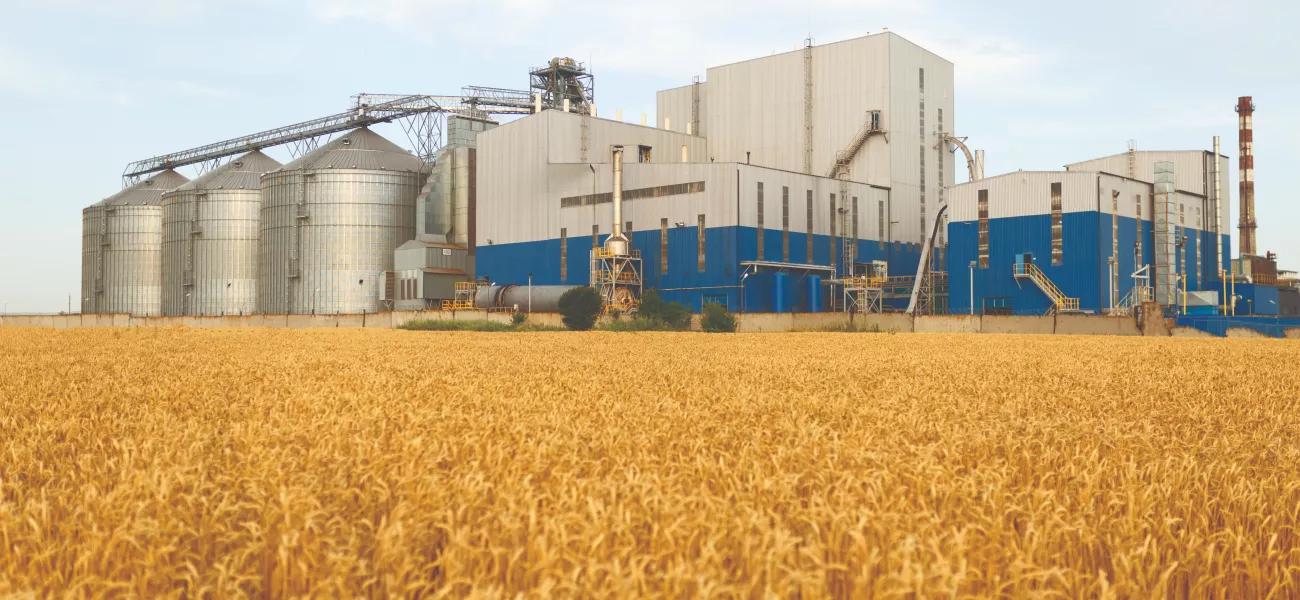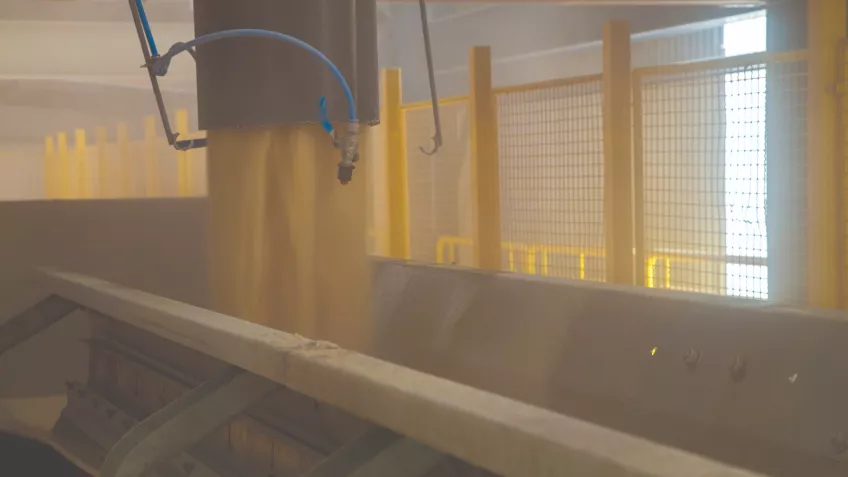
Balancing safety and security are essential in any sector, and it’s certainly the case in agriculture and food production. While surveillance brings many benefits, it’s critical that any security solution plays a role in reducing other safety risks. Here we explore how explosion-protected cameras can offer all the benefits of high-quality surveillance in this industry, while also guarding against the risk of explosions.
To those outside the industry, the potential for explosions in agriculture and the food production sector might seem relatively slim. In reality, and for several reasons, the risk is significant at numerous points along the journey from farm to food production. Managing these risks is clearly essential for the safety of employees, given the devastating effects of any explosion.
To reduce those risks, high-quality video surveillance and network audio can be used to monitor operations in food processing and production facilities. Whether to protect against theft or intrusion, to ensure adherence to health and safety regulations, or to improve operational efficiency, video surveillance and network audio deliver a number of benefits.
It’s critical that the surveillance solution itself becomes part of the approach to risk management, and explosion-protected cameras and speakers provide the ideal solution.
The risk of dust explosions and beyond

Maybe the most obvious are the risks of explosions in the agriculture sector. The use of flammable liquids, gases and materials is an essential part of the agricultural process, all of which present the potential for ignition and fire. Just as critical is another by-product of the farming process: dust. The collection and storing of grain and its further processing into flour are examples of where the creation of large quantities of dust are inevitable and, with it, the risk of dust explosion.
Dust explosions occur where a cloud of dust of a certain particle size and concentration meets an appropriate ignition source, such as a flame or spark. When this occurs, the initial explosion might not be the most destructive, however, the primary explosion cause additional dust to be raised into the air which can lead to a secondary, much larger explosion. When contained within a structure such as a grain silo, for example, these can be devastating. And it’s not only the agricultural sector that is at risk of a dust explosion. Any powdered substance – such as instant coffee, sugar, and powdered milk – has the potential to ignite if the appropriate conditions are met.
Other processes in the food and drink production chain carry further risk of explosion. The creation of flammable liquids and gases as a central part of production, for example in distilleries, and the use of gas in facilities where cooked food is prepared, all carry the potential for explosion through accidents or failure to adhere to health and safety guidelines and regulations.
The multiple benefits of explosion-protected cameras
The use of surveillance cameras in the agriculture and food production industries for safety and security is already widely understood. Explosion-protected cameras, which either utilize an external enclosure that will not allow any sparks to propagate outside, or are designed in such a way that the electronics cannot in themselves create any sparks or hot spots, additional role in risk management.
With no potential to cause an explosion themselves, the cameras can be placed in areas of high risk..numerous needs within health and safety, operational efficiency, and security: identifying potential intruders looking to commit acts of sabotage, disruption or theft; ensuring employees are acting in accordance with health and safety guidelines, and providing analytics that can lead to improvements in operational efficiency.
Explosion-protected thermal cameras bring additional benefits, complementing visual cameras, while also mitigating the risk of explosion in high-risk areas. Thermal cameras can provide early warning of equipment temperatures rising beyond safe levels (presenting the risk of dust ignition), or small fires which if left too long will cause a real risk of a larger explosion. They can also be used to monitor the temperature of ingredients, materials and residue used in the food production process.
In hazardous areas, explosion-protected thermal cameras are able to highlight temperature changes in machinery and equipment that allow for predictive and timely maintenance to be carried out, and alert operators to leaks – for instance refrigeration and heating equipment – that could affect operational efficiency.
The value of network audio
Network audio is expected to be increasingly used as a solution in high-risk areas. Though agricultural and food production facilities may already have emergency EVAC systems in place in the event of an emergency, additional complementary explosion-protected horn speakers are now available. These IP-based solutions can be used to share automatic or manually triggered pre-recorded or live voice messages, which provide a number of use cases for the agricultural and food production sector. Not only do they improve staff safety, but optimize operational efficiency and enhance security.
While network audio is not designed to be used as an emergency or evacuation alarm – certified EVAC systems will continue to take precedent here – it can help provide early warnings. Combining your explosion-protected horn speaker with an explosion-protected thermometric camera, or visual camera with analytics, can enhance the safety of your facility. For example, if the camera were to recognize smoke, or missing personal protective equipment, your network horn speaker can be automatically or manually triggered to play a pre-recorded message to alert personnel.
This also comes with operational efficiency benefits. For example, you can use network audio to notify personnel in response to a system alert such as a notable temperature change for a piece of equipment. A remote operator can then issue live instructions directly to the affected area through a horn speaker. This can come through loudly and clearly even in industrial environments, thanks to the design of the hardware and built-in digital signal processing. As a result, the issue can be quickly and efficiently resolved by on-site personnel.
Network audio can also provide real value for your business from a security perspective, used to help protect your premises and any valuable agricultural machinery or tools you will likely have. For instance, cameras enable you to use motion detection and set up zones to identify a potential trespasser from outside of, or within the organization. With integrated network audio, you can automatically or manually issue an alert to deter an intruder from unauthorized access.
Protecting people and facilities
The primary thought is always the safety and protection of people. Any explosion in agriculture and food production has the potential to cause injury and worse. In addition, the potentially devastating damage caused by an explosion will inevitably be highly disruptive to the agriculture and food production process.
Mitigating the risk is essential, but it’s also critical to do so without compromising the quality of surveillance: to do so would be entirely counter-productive. An ideal solution combines both visual and thermal explosion-protected cameras, as well as explosion-protected network speakers.
